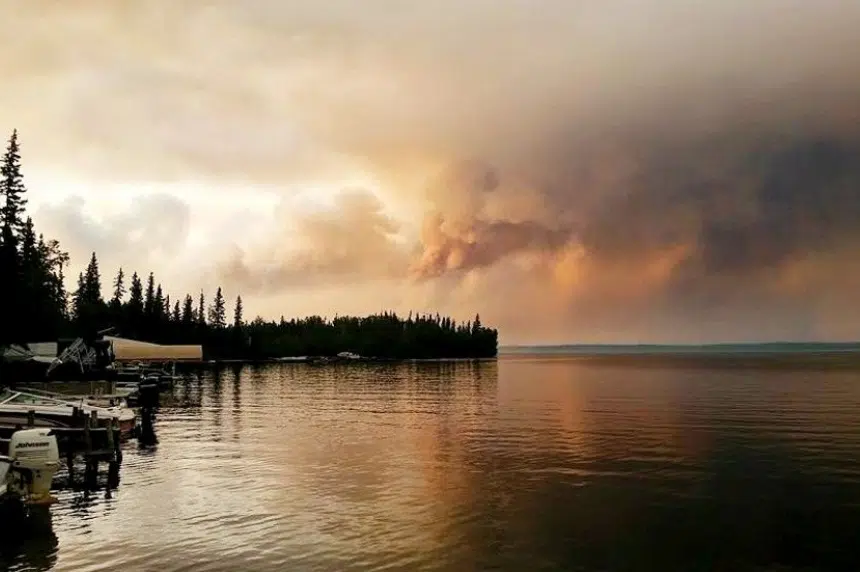Smoke from northern Saskatchewan wildfires has helped fire crews fight the flames, according to the province’s top wildfire management official.
Heavy smoke has helped to reduce the fires’ activity since the sun is not directly hitting the ground and warming the fires, executive director of wildfire management Steve Roberts, said.
“It’s helped us to secure especially those fires that are close to communities by putting people on the ground and getting some hose lines in place,” he said on Wednesday.
The cloud layer is filled with smoke and is so thick, the temperature on the ground is about 10 degrees cooler. The humidity is also about 10 to 15 per cent higher.
“That combination means that the fire activity drops significantly,” Roberts said. “So, instead of fires that’s very active, very quick moving, we now have fires that have very low flame, limited movement and much less conditions that pose threats to firefighters.”
This allows crews to do more work with heavy equipment on the ground than it could before, Roberts added.
Smoke will be lighter for the next 12 hours, Roberts said, because there is a weather system moving through and stirring up the air mass, causing the smoke to dissipate.
“As it gets filled behind with another stable air mass, we likely will see the smoke increase once again,” he said. “So we’re going to take advantage of these better visibility conditions, if we can get aircraft out to some of these fires to support our ground crews, we will definitely take advantage of that.”
Roberts said the forecast may bring a reprieve with a chance of precipitation and higher humidity. But long term, he said the fires will still be on the landscape, and crews will focus on “community protection”.
Because of the fires’ proximity to communities, the evacuations could last for a “couple more days to come,” Roberts added.
There are about 600 people directly on the fire line, but additional help has come in the form of aircraft from Quebec, Ontario, New Brunswick and Newfoundland and Labrador. There is also a crew en route from South Dakota to help.
They’ll be battling fires that have been acting “extremely aggressively” since a recent weather system caused existing wildfires to flare up. The fuels for the fires are very dry, after a dry winter and spring.
The fires are growing quickly and are difficult to manage and contain, Roberts said.
Out of the 110 wildfires actively burning in the province, only 10 are contained.
The province is also fighting a new fire in the Pinehouse area. The community itself has undertaken some evacuations and the province has moved in equipment to try to cut off a fire that’s moving in the community’s direction.
On Twitter: @thiajames







